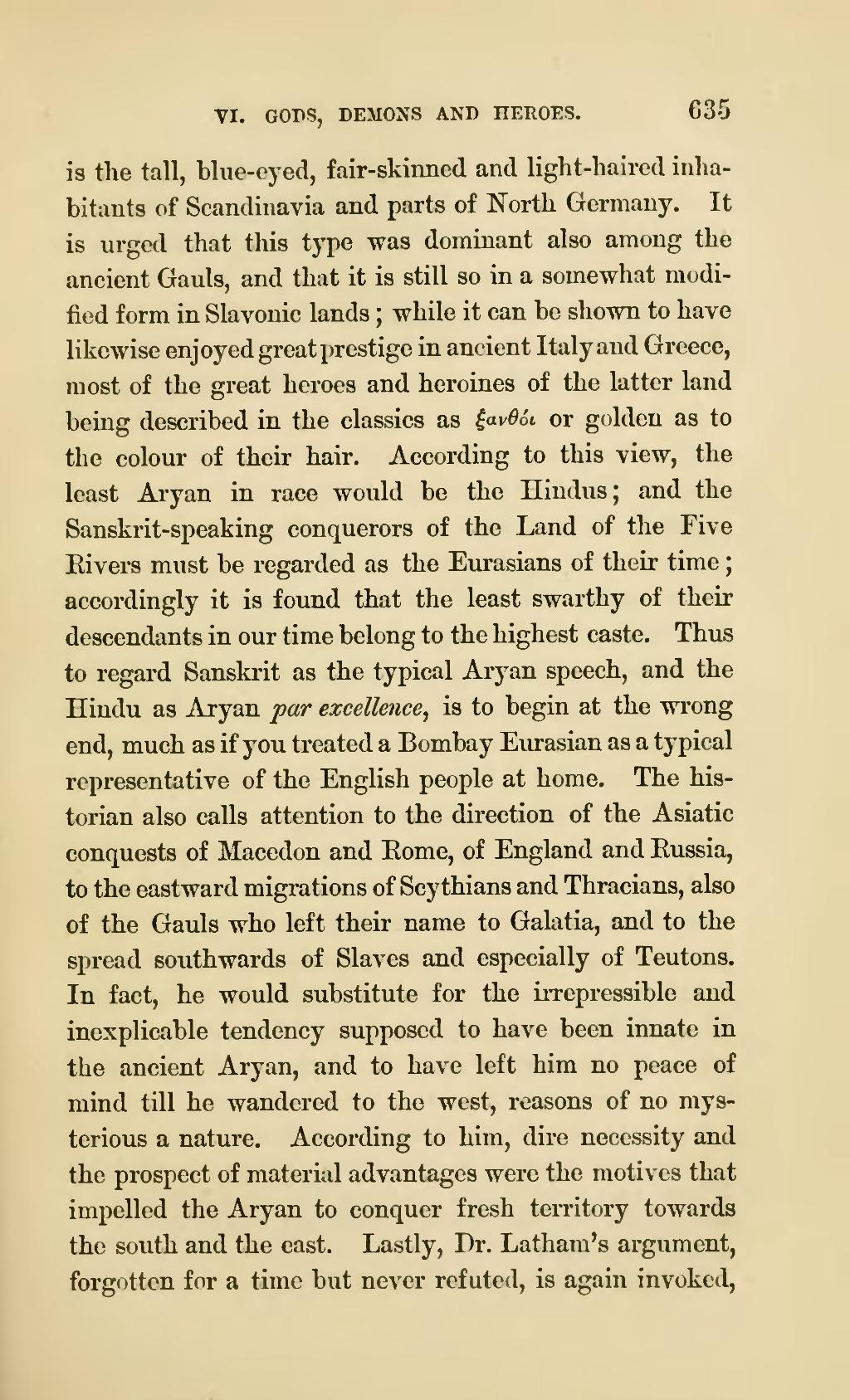is the tall, blue-eyed, fair-skinned and light-haired inhabitants of Scandinavia and parts of North Germany. It is urged that this type was dominant also among the ancient Gauls, and that it is still so in a somewhat modified form in Slavonic lands; while it can be shown to have likewise enjoyed great prestige in ancient Italy and Greece, most of the great heroes and heroines of the latter land being described in the classics as ξανθόι or golden as to the colour of their hair. According to this view, the least Aryan in race would be the Hindus; and the Sanskrit-speaking conquerors of the Land of the Five Rivers must be regarded as the Eurasians of their time; accordingly it is found that the least swarthy of their descendants in our time belong to the highest caste. Thus to regard Sanskrit as the typical Aryan speech, and the Hindu as Aryan par excellence, is to begin at the wrong end, much as if you treated a Bombay Eurasian as a typical representative of the English people at home. The historian also calls attention to the direction of the Asiatic conquests of Macedon and Rome, of England and Russia, to the eastward migrations of Scythians and Thracians, also of the Gauls who left their name to Galatia, and to the spread southwards of Slaves and especially of Teutons. In fact, he would substitute for the irrepressible and inexplicable tendency supposed to have been innate in the ancient Aryan, and to have left him no peace of mind till he wandered to the west, reasons of no mysterious a nature. According to him, dire necessity and the prospect of material advantages were the motives that impelled the Aryan to conquer fresh territory towards the south and the east. Lastly, Dr. Latham's argument, forgotten for a time but never refuted, is again invoked,
Page:Origin and Growth of Religion (Rhys).djvu/651
VI. GODS, DEMONS AND HEROES.
635
